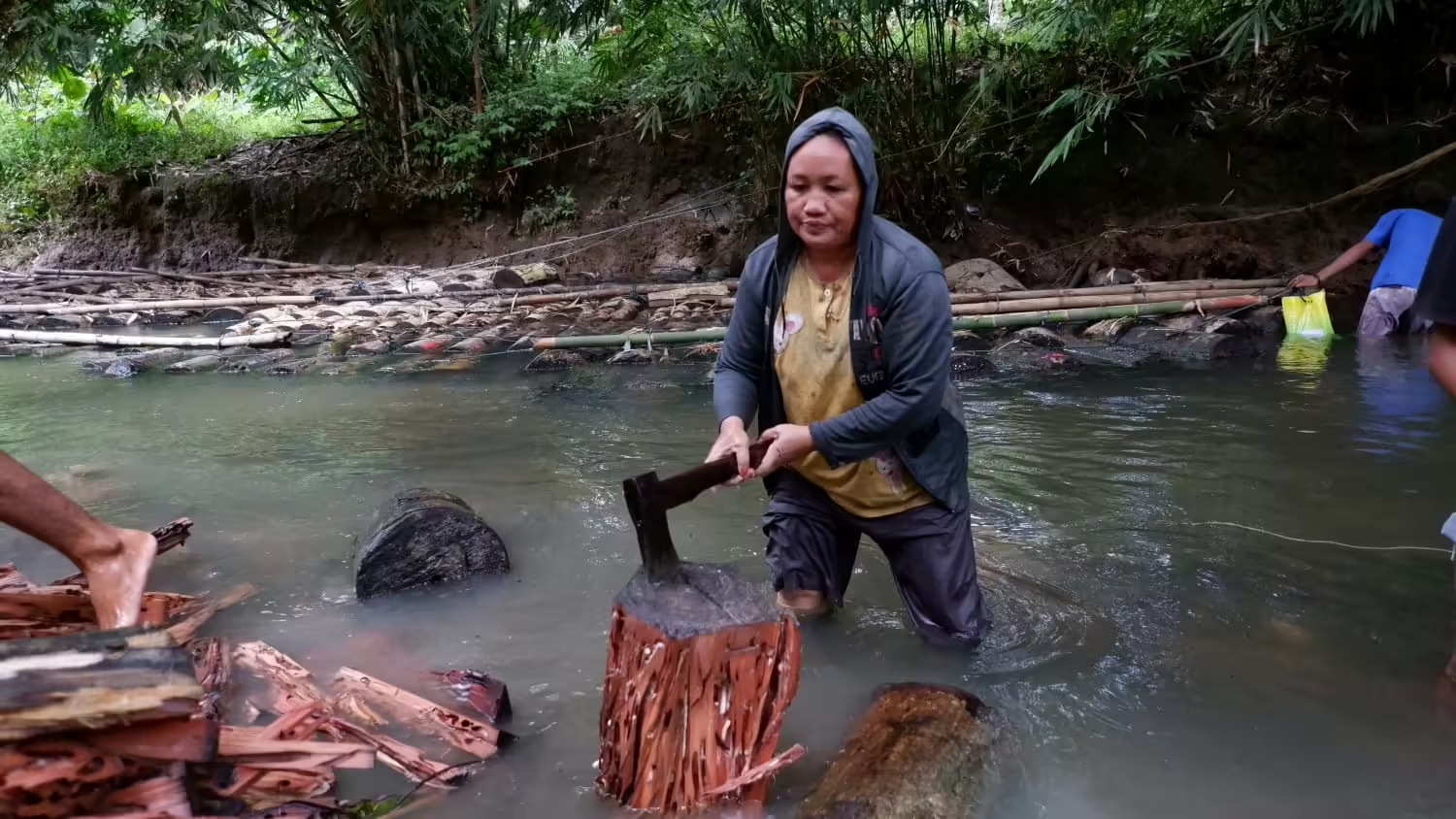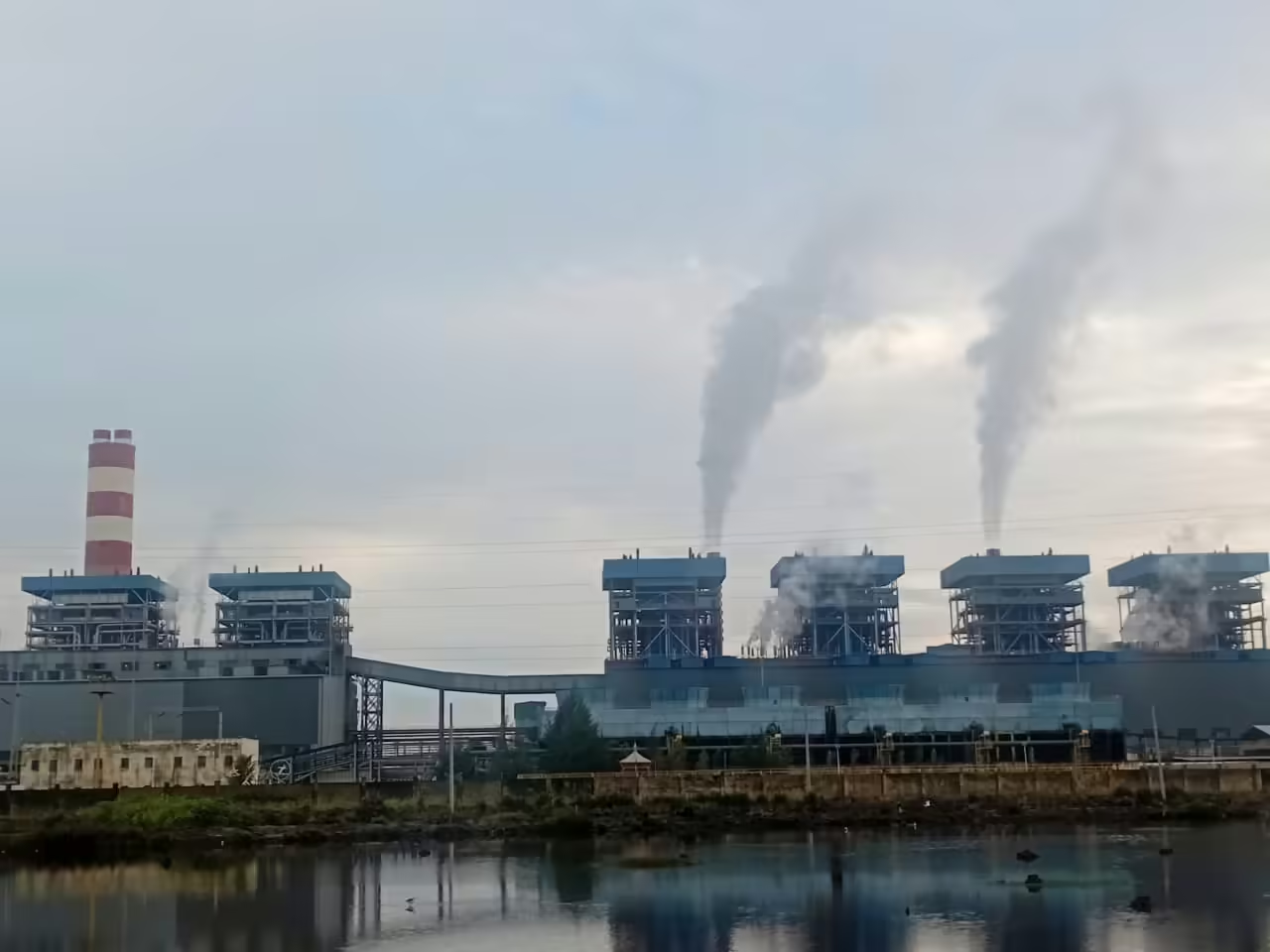People of the region whittled Kerinci Seblat National Park with a new road. They disobeyed restriction of Ministry of Forestry.
Seven years ago, Kerinci Seblat National Park was a joyful forest. Trees grew lush. Their trunks covered by fungus and lush bushes. People who entered the forest, shall found thousand of leech, danced and ceroused with blood.
“It was like rain of lush from the top of trees and bushes,” said Cahyo Junaedy, a news reporter, 30 days visited the forest seven years ago.
He penetrated 130 kilometres deep into the forest to research vegetation and animals. Along the journey, he accompanied by gangs of monkey, run before elephants, dan runaway from pumas.
It is become old story now. The beautiful rainforest is languish. The dark alley of the forest becomes open field with remains of trees. That is happening in Lempur Village in Kerinci District, Jambi Province.
Under the high trees, a big road split the forest, ten to 15 metres wide. Still under construction, the road is wet and dumpy. Congeries of remains of woods and mountainous sand on it’s side.
There is no wild animals but some species of butterflies and songs of invisible birds or sounds of insects. Some footprints of deers shown on the wet ground, satisfy our heart a little. “They just crossed a few hours before,” said Untung Wantoro, National Park officer who joined Tempo to the forest two weeks ago.
The road built three kilometres inside the green forest. But according to the masterplan, it shall be 34 kilometres, connecting Kerinci District and Ipuh Village in Muko-muko District. They are in Jambi Province.
The road cut Kerinci Seblat National Park’s area, whereas stated as world heritage by UNESCO at 2004. 306 species of birds living in the 1.36 million hectare area, include 42 species of mammals, eight species of primates, and 40 species of amphibians.
The forest is also living area for seven species of cat, among them are tree tiger and endemic Sumatra Tiger (Panthera tigris sumatrensis).
There are 2,000 to 3,000 species of vegetations. Among them are Meranti Tree (Shorea atrinervosa), rattan (Calamus leoli), Rafflesia hasseltii and Rafflesiaarnoldi, aloe tree (Aquilaria spp), and Pacat Tree (Harpulia arborea). 300 species of orchid also grow in the rainforest.
Alip Tanton Hartono from Office of Kerinci Seblat National Park said the road shall imbalance of ecosystem. It will cross the catchment area of Sumatra Tiger and Sumatra Rinocheros.
Deborah Martyr, an environment activist of Fauna & Flora International said the road will cross habitation of Sumatra Tiger and Sumatra Rhinoceros which population is endangered. “Means you welcome the hunter warmly,” the Englishwoman cried.
Martyr spent her live year by year in the forest. She believe the road shall destroy Kerinci Seblat National Park piece by piece. Without the road’s case, the forest is toward to an end. She often saw hunters carried tiger’s skin freely. And so do the illegal loggers. It means the door of illegal hunter and logging open wider.
People of Lempur push to open the road. One of them, Muhammad Dayan, said his people understood the principles of conservation. But in their mind, to increase the welfare of people is more important then to protect wild animals or forest. “Why do they always talk about protect and care of wild animals, what about our life?”
Lempur nobleman, Depati Agung Syukur Kela Brajo, said geographic position of the village made them isolated between Sungai Penuh, capital city of Kerinci District, and National Park.
The new road will open access to Bengkulu Province, where they could buy fresher fishes. They just need a half hour hour to reach Bengkulu and the sea by the new road.
But an economic calculation had been discussed in seminar by nine district surround the National Park at October 2001, motored by Greenomics Indonesia. In the seminar took place in Padang, West Sumatra, they concluded that the road development will lessen benefit.
These were the calculations: people and district government surround National Park will earn 8.8 billion rupiahs from trading and District Original Income as much as 6.1 billion rupiahs for ten years. But to open the forest is equal with lost of 2 billion rupiahs from illegal logging, ten billion rupiahs from lost of biodiversity, and ecological lost 20 billions rupiahs.
Economic productivity estimated will flow down five years after development of the road because of lack of ground ability to preserve water. It shall impact to plantation and agriculture, each lost 47.7 billion rupiahs. People will lost 530 million rupiahs because of lack of reserve water. Total of economic lost will reach 65.7 billion rupiahs.
Peoples of Lempur did not put attention to the calculations. At February they start to develop the road. They was hiding behind letter of Direktorat Jenderal Perlindungan Hutan dan Konservasi Alam (General Directorate of Forest Protection and Natural Conservation) dated November 2005. People thought the letter was an approval.
But actually the letter just approve renovation of a cutoff road which built on colonialism era hundred years ago, 16 kilometers length and 1.5 meters width, hardened by natural stones not cement.
But peoples deny and build 15 meters width, 34 kilometers long road. “A cutoff is insulting!” said Syukur, an eldest of Lempur.
Environment activists and officers of Office of Kerinci Seblat National Park could not tolerate the actions. They held some meetings with Lempur people but had no satisfied result. Head of Office of Kerinci Seblat National Park, Soewartono, denounced Syukur and his people to the police department. But they did not take any actions yet.
Syukur justification the forest as land of Kedepatian Alam Sakti Lekuk 50 Tumbi, a tradition community of Lempur. So they need no appraisal from everyone. “We want to launder clothes in our own home, who shall prohibit us from?” He replied.
The claim put him face of face with other tradition community of Kerinci. Depati Rencong Telang Bustami Ilyas from Depati IV Alam Kerinci said authority of Lempur peoples and Kedepatian Alam Sakti was limited in their village’s border. But the forest is ruled under justification of Depati IV Alam Kerinci.
Minister of Forestry, Malam Sambat Kaban, also reject the project. “Better stopped!” the minister said to Tempo. If continued, he promised to prosecute they whom responsible with the project.
But without the case of road, Kerinci Seblat has been endangered. According to Kholid Indarto from Office of Kerinci Seblat National Park, at year 2006, they found illegal logging on 240 hectare area.
They only have 108 National Park’s forest guard –work each day to cover 1.36 million hectare–. So they could not do more. And so do their budget. They could only held eight operations a year because of limitation of budget.
Now, the park called “A handful land from heaven which thrown down to earth” by Kerinci’s poet, Burhan Gozali, is dying. The road and other problems will bring the beautiful forest to the end and told as an old story.
Deddy Sinaga (Kerinci)



